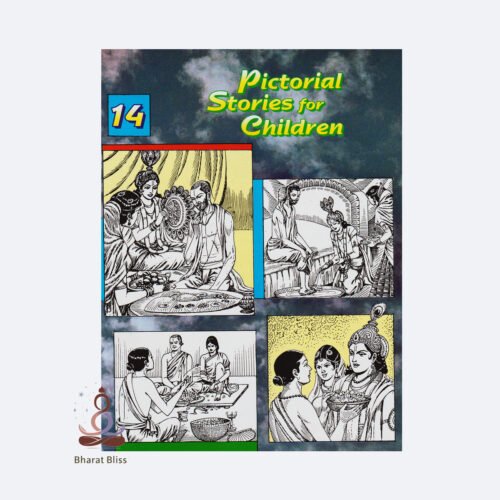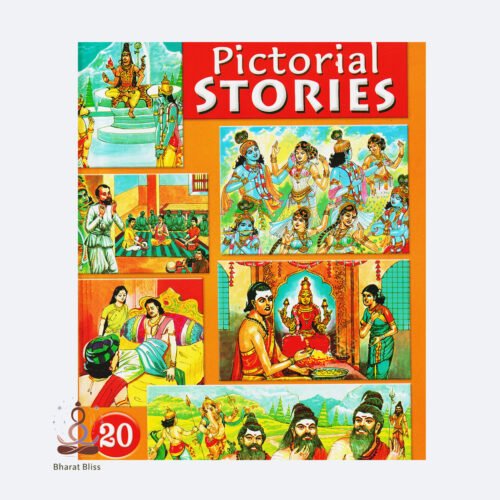-
Words of the Master
₹35.00Words of the Master" refers to the teachings, guidance, or wisdom shared by a highly respected teacher, guru, or enlightened individual. These words are often considered profound, insightful, and transformative—aimed at guiding disciples, followers, or readers toward a deeper understanding of life, truth, or a specific discipline. They may come in the form of quotes, parables, scriptures, or conversations -
My Master
₹30.00- A person you consider your master or mentor?
-
A title or name of something (like a book, song, or movie)?
-
A project or product called “My-Master” that you want described in English?
Let me know a bit more so I can help you out accurately
-
Our Women
₹35.00Could you please clarify what you mean by “Our-Women by A poem, story, or article titled “Our Women”?
-
A general description of women from a particular group (e.g., “our women” as in women from a specific culture, community, or country)?
-
Something else entirely
-
-
Siva and Buddha
₹25.00Siva-and-Buddha.
Shiva is one of the principal deities of Hinduism, known as "The Destroyer" within the Trimurti (the Hindu trinity that includes Brahma the creator, Vishnu the preserver, and Shiva the destroyer). However, his role is not just destruction—he also represents transformation, regeneration, and the cycle of birth and rebirth.
-
Attributes: Shiva is often depicted with a third eye on his forehead (symbolizing wisdom), a crescent moon in his hair, and the holy river Ganga flowing from his locks. He holds a trident (trishula) and is often shown seated in deep meditation or dancing the cosmic dance (Nataraja).
-
Symbols: The lingam (a symbol of divine generative energy), the damaru (small drum), and the serpent around his neck.
-
Consort: Parvati (also known as Shakti or Durga).
-
Mount: Nandi the bull.
Shiva is also associated with asceticism, yoga, and inner stillness, while at the same time being a force of change and destruction when needed for cosmic balance.
Buddha
Buddha, meaning "The Enlightened One," refers to Siddhartha Gautama, the founder of Buddhism. He was a prince who renounced his royal life in search of truth and ultimately attained enlightenment under the Bodhi tree.
-
Attributes: The Buddha is typically shown in serene meditation, often with elongated earlobes (symbolizing renunciation of material wealth), a peaceful face, and a topknot or cranial bump (ushnisha) symbolizing spiritual wisdom.
-
Teachings: He taught the Four Noble Truths and the Eightfold Path, which guide people toward overcoming suffering (dukkha) and achieving nirvana—a state of liberation from the cycle of birth and rebirth (samsara).
-
Beliefs: Buddhism does not focus on a creator god, but instead on personal spiritual development, ethical conduct, and mindfulness
-
-
Rebuild India
₹20.00Rebuild India is a vision and movement focused on restoring, revitalizing, and transforming India into a stronger, more united, and prosperous nation. It emphasizes the importance of collective efforts in rebuilding every aspect of the country—its infrastructure, economy, environment, education, healthcare, and social fabric.
The goal of Rebuild India is not only to fix what is broken but to innovate and build a better future for the next generations. It encourages active citizen participation, youth involvement, sustainable development, digital transformation, and inclusive growth.
Whether it's through empowering rural communities, promoting clean energy, supporting startups, enhancing education quality, or ensuring justice and equality, Rebuild India stands for progress that uplifts every Indian
and transforming India into a stronger, more united, and prosperous nation. It emphasizes the importance of collective efforts in rebuilding every aspect of the country—its infrastructure, economy, environment, education, healthcare, and social fabric.
The goal of Rebuild India is not only to fix what is broken but to innovate and build a better future for the next generations. It encourages active citizen participation, youth involvement, sustainable development, digital transformation, and inclusive growth.
Whether it's through empowering rural communities, promoting clean energy, supporting startups, enhancing education quality, or ensuring justice and equality, Rebuild India stands for progress that uplifts every Indian
is a vision and movement focused on restoring, revitalizing, and transforming India into a stronger, more united, and prosperous nation. It emphasizes the importance of collective efforts in rebuilding every aspect of the country—its infrastructure, economy, environment, education, healthcare, and social fabric.
The goal of Rebuild India is not only to fix what is broken but to innovate and build a better future for the next generations. It encourages active citizen participation, youth involvement, sustainable development, digital transformation, and inclusive growth.
Whether it's through empowering rural communities, promoting clean energy, supporting startups, enhancing education quality, or ensuring justice and equality, Rebuild India stands for progress that uplifts every Indian
-
Real Worship
₹35.00Real Worship
Real Worship is a deep and sincere connection with God that comes from the heart. It is not just about outward actions like singing, praying, or attending religious gatherings. Instead, it is about honoring God with true devotion, love, and obedience.
Real worship means:
-
Loving God above everything else.
-
Obeying His word and living according to His will.
-
Being thankful for His blessings and mercy.
-
Worshiping with a pure heart, not just with words or rituals.
-
Helping others and living a life that reflects God's goodness.
Real worship can happen anywhere—at home, in nature, or in a place of worship—because it’s about your personal relationship with God.
-
-
Ganesh Gita
₹30.00Ganesh Gita
The Ganesh Gita is a sacred discourse between Lord Ganesha and his devoteeKing Varen ya. It primarily emphasizes the path of devotion (bhakti), self-realization, and spiritual wisdom.
In this dialogue, King Varenya seeks to understand the true nature of the Self, the universe, and the Supreme Reality. Lord Ganesha, acting as the divine guru, responds with profound teachings on:
-
The impermanence of the material world
-
The importance of detachment and devotion
-
The role of yoga and meditation
-
The realization of the Self as Brahman (Supreme Consciousness)
He explains that liberation (moksha) comes from understanding one’s true nature beyond body and mind, and through single-minded devotion to the divine.
Like the Bhagavad Gita, the Ganesh Gita also promotes the idea that spiritual knowledge, when combined with devotion, leads to ultimate freedom and inner peace.
Key Themes in Ganesh Gita:
-
Jnana Yoga (Path of Knowledge)
-
Bhakti Yoga (Path of Devotion)
-
Atma Jnana (Knowledge of the Self)
-
Detachment from desires
-
Worship of Ganesha as the Supreme Reality
-
-
How to Build a Character
₹25.00🛠️ How to Build a Character
1. Start with the Basics
Give your character a name and basic info:
-
Name: Choose something that fits their culture, setting, or personality.
-
Age: Is your character young, middle-aged, or old?
-
Gender: Male, female, non-binary, or otherwise?
-
Occupation: What do they do? (e.g., detective, student, warrior)
2. Physical Description
Describe how they look:
-
Height & Build: Tall, short, skinny, muscular?
-
Hair: Color, style, length.
-
Eyes: Color, shape, expression.
-
Clothing: Modern, fantasy, rich, poor?
-
Notable Features: Scars, tattoos, birthmarks, etc.
Example:
He is a tall man with messy black hair and deep-set green eyes. A long scar runs across his left cheek, and he wears a battered leather jacket.3. Personality Traits
Describe their behavior and mindset:
-
Are they kind, brave, shy, rude, intelligent, funny, cold?
-
Include strengths and flaws.
Example:
She is clever and confident, but also impulsive and quick to anger. She has a strong sense of justice.4. Backstory
Where do they come from?
-
Childhood, family, important events.
-
What made them who they are today?
Example:
Raised in a war-torn village, he learned to survive on his own from a young age. The loss of his family drives his desire for revenge.5. Motivations and Goals
What does your character want?
-
Revenge? Love? Redemption? Fame? Freedom?
Example:
Her goal is to become the greatest healer in the kingdom to save her sick sister.6. Relationships
Who are the key people in their life?
-
Friends, enemies, mentors, family?
Example:
His best friend is a rogue with a mysterious past, and his enemy is the man who destroyed his home.7. Unique Quirks or Habits
Add something that makes them stand out:
-
Nervous tics, catchphrases, fears, hobbies.
Example:
He talks to his sword like it's alive. He collects shiny stones -
-
A Short Guide to Meditation
₹30.00A Short Guide to Meditation
🧘♂️ What is Meditation?
🪷 Basic Steps to Meditate
-
Find a Quiet Space
Sit or lie down in a quiet place where you won’t be disturbed. -
Sit Comfortably
Keep your back straight but relaxed. You can sit on a chair or the floor. -
Close Your Eyes
This helps you focus inward and reduce distractions. -
Focus on Your Breath
Notice your breathing. Feel the air entering and leaving your nose or lungs. Don’t try to change it—just observe. -
Let Thoughts Come and Go
If thoughts arise (and they will), don’t fight them. Gently bring your attention back to your breath. -
Start Small
Begin with just 5–10 minutes a day. You can increase the time as you get more comfortable.
🧠 Tips for Better Meditation
-
Be patient with yourself.
-
It’s okay if your mind wanders—just return to your focus.
-
You can also use a mantra (a word or phrase you repeat silently) or guided meditation audio.
-
Consistency is more important than duration.
🌟 Benefits of Meditation
-
Reduces stress and anxiety
-
Improves focus and memory
-
Helps with emotional balance
-
Promotes better sleep
-
-
Pictorial Stories for Children2
-
Scene 1: Jungle Kingdom
– A lion declares himself king and starts troubling all animals.
(Image: Lion roaring, animals looking scared) -
Scene 2: The Plan
– Animals decide to send one animal a day to the lion as food.
(Image: Group of animals talking sadly) -
Scene 3: Enter the Clever Rabbit
– One day, a clever little rabbit is chosen. He decides to teach the lion a lesson.
(Image: A smart rabbit thinking) -
Scene 4: Rabbit Meets the Lion
– Rabbit arrives late. Lion gets angry. Rabbit tells lion another lion stopped him.
(Image: Angry lion; rabbit talking) -
Scene 5: Lion Looks for Rival
– Rabbit leads lion to a deep well, says the rival lion is inside.
(Image: Lion looking into a well) -
Scene 6: Lion Jumps into Well
– Lion sees his reflection, thinks it’s the enemy, and jumps in.
(Image: Lion jumping into water) -
Scene 7: Animals Celebrate
– The jungle is safe again. All animals cheer for the rabbit.
(Image: Happy animals with the rabbit
-
-
Divine Paraphernalia
₹60.00
🌟 Greek Mythology
-
Zeus – King of the gods, ruler of Mount Olympus, and god of the sky, lightning, and thunder.
-
Hera – Queen of the gods, goddess of marriage and family.
-
Poseidon – God of the sea, earthquakes, and horses; brother of Zeus.
-
Athena – Goddess of wisdom, war strategy, and crafts.
-
Apollo – God of the sun, music, poetry, and prophecy.
-
Artemis – Goddess of the hunt, moon, and nature; twin sister of Apollo.
-
Aphrodite – Goddess of love, beauty, and desire.
-
Hades – God of the underworld and the dead.
🌞 Egyptian Mythology
-
Ra – Sun god, creator god, and ruler of the heavens.
-
Isis – Goddess of magic, healing, and motherhood.
-
Osiris – God of the afterlife and resurrection.
-
Horus – Sky god, god of kingship, often depicted with a falcon head.
-
Anubis – God of mummification and the afterlife, depicted with a jackal head.
-
Bastet – Cat goddess of home, fertility, and protection.
🔱 Hindu Mythology
-
Brahma – The creator god, part of the Trimurti (Trinity).
-
Vishnu – The preserver god, protector of the universe.
-
Shiva – The destroyer and transformer god, part of the Trimurti.
-
Lakshmi – Goddess of wealth, prosperity, and fortune.
-
Saraswati – Goddess of knowledge, music, and wisdom.
-
Durga – Warrior goddess, symbol of strength and protection.
-
Kali – Fierce form of Durga, goddess of destruction and rebirth.
⚔️ Norse Mythology
-
-
Pictorial Stories for Children2
-
Scene 1: Jungle Kingdom
– A lion declares himself king and starts troubling all animals.
(Image: Lion roaring, animals looking scared) -
Scene 2: The Plan
– Animals decide to send one animal a day to the lion as food.
(Image: Group of animals talking sadly) -
Scene 3: Enter the Clever Rabbit
– One day, a clever little rabbit is chosen. He decides to teach the lion a lesson.
(Image: A smart rabbit thinking) -
Scene 4: Rabbit Meets the Lion
– Rabbit arrives late. Lion gets angry. Rabbit tells lion another lion stopped him.
(Image: Angry lion; rabbit talking) -
Scene 5: Lion Looks for Rival
– Rabbit leads lion to a deep well, says the rival lion is inside.
(Image: Lion looking into a well) -
Scene 6: Lion Jumps into Well
– Lion sees his reflection, thinks it’s the enemy, and jumps in.
(Image: Lion jumping into water) -
Scene 7: Animals Celebrate
– The jungle is safe again. All animals cheer for the rabbit.
(Image: Happy animals with the rabbit
-
-
- A person you consider your master or mentor?
-
A title or name of something (like a book, song, or movie)?
-
A project or product called “My-Master” that you want described in English?
Let me know a bit more so I can help you out accurately
-
Real Worship
Real Worship is a deep and sincere connection with God that comes from the heart. It is not just about outward actions like singing, praying, or attending religious gatherings. Instead, it is about honoring God with true devotion, love, and obedience.
Real worship means:
-
Loving God above everything else.
-
Obeying His word and living according to His will.
-
Being thankful for His blessings and mercy.
-
Worshiping with a pure heart, not just with words or rituals.
-
Helping others and living a life that reflects God's goodness.
Real worship can happen anywhere—at home, in nature, or in a place of worship—because it’s about your personal relationship with God.
-













